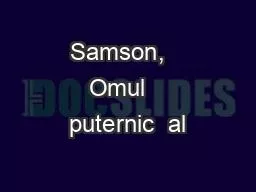PPT-GROUP 2: Martha Ingram, Megan Johnston, Chelsea Samson
Author : danika-pritchard | Published Date : 2018-11-02
MENTORS Dr Michael Holzman Dr William Beck Dr Benjamin Poulose An Opening in the Abdomen An Opening in the Market Hernia Tensiometers Hernias and their repair
Presentation Embed Code
Download Presentation
Download Presentation The PPT/PDF document "GROUP 2: Martha Ingram, Megan Johnston, ..." is the property of its rightful owner. Permission is granted to download and print the materials on this website for personal, non-commercial use only, and to display it on your personal computer provided you do not modify the materials and that you retain all copyright notices contained in the materials. By downloading content from our website, you accept the terms of this agreement.
GROUP 2: Martha Ingram, Megan Johnston, Chelsea Samson: Transcript
Download Rules Of Document
"GROUP 2: Martha Ingram, Megan Johnston, Chelsea Samson"The content belongs to its owner. You may download and print it for personal use, without modification, and keep all copyright notices. By downloading, you agree to these terms.
Related Documents














